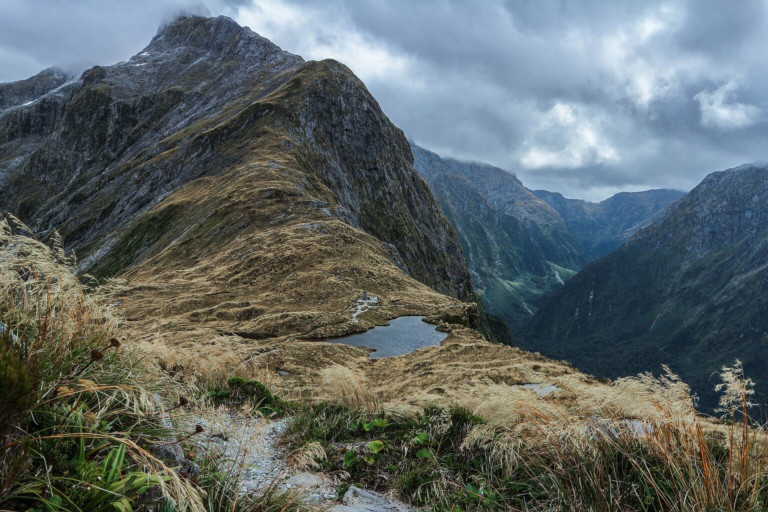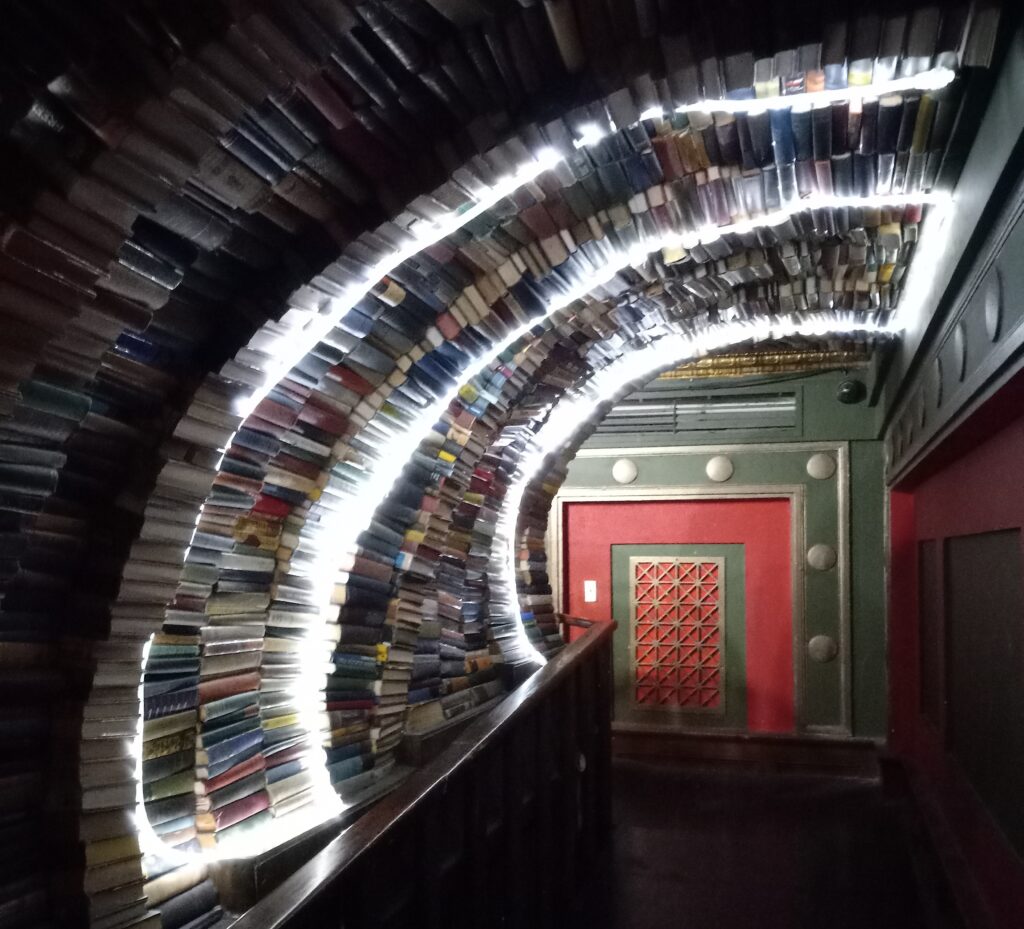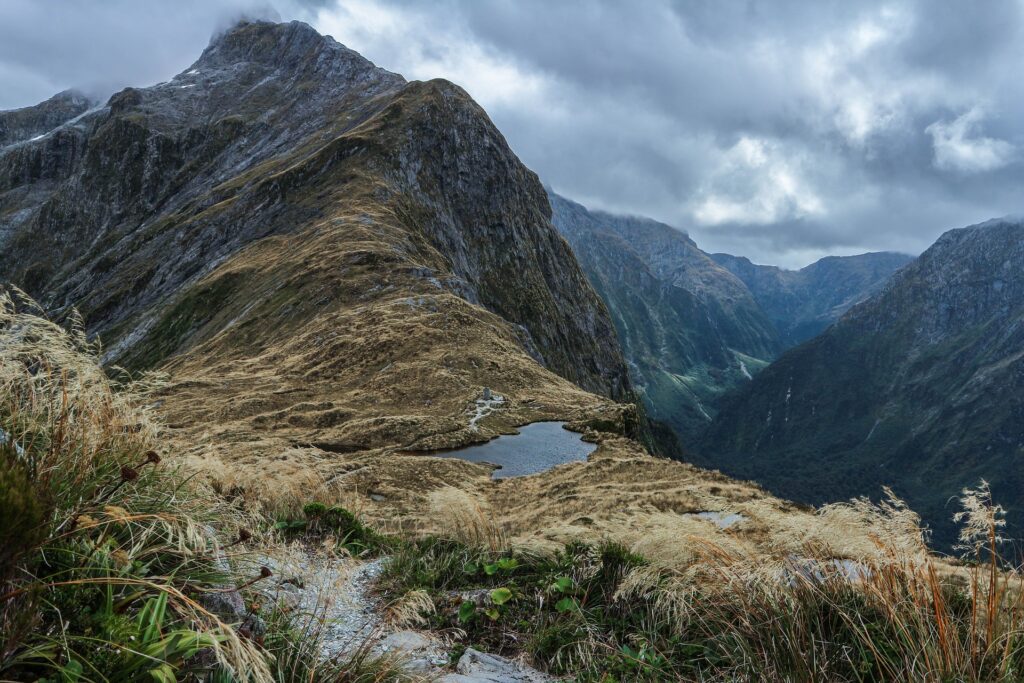Hi all,
Earlier in the summer I visited the LA Eco-village and continue to work on an essay on my brief visit with that community. But in the meantime, while in Los Angeles, I visited The Last Bookstore and found a short book on kōans. An LA Eco-village member also shared with me a powerful quotation. Together they sparked this reflection.
Go with Gaia,
An information cascade at The Last Bookstore (Image by Erik Assadourian)
Signs of Gaia
When coming across sayings about God, I often find myself substituting God out and seeing if Gaia fits in God’s place. Often that’s the case. For example:
“When you die, you’ll meet God.” (which I saw along a highway in New York.)
“Have you met Jesus?” (seen in Connecticut.)
Looking across the bowels of the Internet (aka Google Image Search), I find many more, like: “Trust in Jesus. Jesus is Alive!” and “In the beginning, GOD CREATED.” and “There is evidence for GOD.”1
All of these work just as well (if not better) switching in Gaia:
- Have you met Gaia?
- There is evidence for GAIA.
- In the beginning, GAIA CREATED.2
- Trust in Gaia, Gaia is Alive!
- When you die, you’ll meet Gaia. (In the sense that you’ll return to the larger living Earth system to be recycled into new beings and continue the cycle of life. Though truthfully, you already have met and interact with Gaia every day.)
A better billboard? (Gaia peeking through hurricane cloud covering. Original billboard, on left, found without attribution here.)
Misconnecting the Awe of This World with the Other-worldly
I’d argue this substitution works so well because much of the numinous that we feel and attribute to God comes straight from our deep and total (yet too often interrupted) connection with nature. That’s not to say that can’t be labeled God, and I acknowledge for some, that God is a separate and parallel (or superior) being. But this quotation that a new friend shared sums up this insight well:3
“There is One Holy Book, the sacred manuscript of nature, the only scripture which can enlighten the reader.” —Hazrat Inayat Khan
That might sound arrogant coming from a self-proclaimed Gaian. But from the bringer of Sufism to the West, less so. It reminds us that all words written by man4 (even if magical men) are far inferior to nature’s guide itself. Indeed, Khan says something similar himself, calling all scriptures “as little pools of water before the ocean” of the “the incorruptible manuscript of nature, the only Holy Book, the perfect and living model that teaches the inner law of life.”
Really, there is nothing more to say than this. But reading a Zen kōan from Koans: The Lessons of Zen, this point becomes even clearer. A Zen teacher criticizes some students and muses how there are no Zen teachers in the land of T’ang. When the students ask who teaches disciples then, the teacher says:
“I do not say that there is no Zen, but that there is no Zen teacher.”5
As the kōan commentary explains, the point is that Zen cannot be taught. Instead, “you must attain it by your own practice, study, and research.”
That is as true with the Gaian Way. Our words are as little pools (and cloudy at that), and even the deep insights of ecologists, Indigenous elders, permaculture experts, natural midwifes, botanists, and climate scientists offer but a mere glimpse of Gaia’s wisdom.
Just as the printing press de-mediated God’s word from the priestly class, allowing all to read the Bible, Gaia is accessible to all, and is the true teacher. Yes, some of Gi’s knowledge is difficult to read—ice core data, for example, but unlike cast bones or entrails, those with training can verify and contest the data provided, and anyone with passion and interest can read this aspect of Gaia.6 The same goes with wildlife tracks, tree identification, local birdsong, or geology.
The Anthropomorphization Problem
As Gaia is not anthropomorphized, it is harder, perhaps, to connect directly to Gi than it is to a human-like God figure (or to an actual human god-figure like Krishna, Jesus, or the Buddha). When you can imagine that ‘Jesus gets us’, as this new hundred million dollar Christian marketing campaign suggests, that’s powerful. Or even better, when you can directly chat with Jesus (through prayer, or now through this new Jesus AI chat app) again, that makes it easier to focus one’s awe and enchantment on a specific god-being.
But supporting numinous connection with nature is the magnetic beauty of even the tiniest fragment of Eden. This past week, as my wife and I struggled to find a hiking trail in the middle of divided highway sprawl (and couldn’t) we ‘recalculated’ and went to a tiny town park that seemed to have a walking trail. It did—a tiny one maybe a quarter of a mile long, but wrapping around a picturesque little pond, which we sat by and enjoyed observing the lone goose bathing, playing, and splashing his way through the scorching afternoon.
Moments sharing in Gaia’s beauty and resilience keep me as devoted and reverent as any church service (or chatbot) would and reminds me that I have not only met Gaia but encounter Gi every moment I’m alive. Every sip of water, every breath of air, every morsel of food, and every time my heart beats. Gaia is within and around me. Who better to learn from than that?7
Our words are as little pools to the ocean of nature. (Image from BrendanPark via Pixabay)
Endnotes
1) There was also a very wrong: “Muslims Heart Jesus.” But substituting Jesus for Gaia and it seems less wrong, after all, Muslims (and all humans) can (and should) love Gaia as they’re part of Gaia and utterly dependent on Gi.
2) Not exactly accurate as it was probably more that life was sparked into being from the energetic deep ocean and/or lightning energy but once a planetary holobiont formed, new and abundant life continues to spring from this being.
3) Thanks to Lara for sharing that quote with me!
4) I wish I could say humans but most religions (and texts) were founded by (or at least credited to) men.
5) From Case 11—Obaku’s “Partakers of Brewer’s Grain” (p. 49)
6) Of course, this can also be abused, and often is by ‘false prophets,’ such as climate skeptics paid by corporate interests that have much to lose as civilization shifts from a growth economy sustained by fossil fuels.
7) One final caveat: This is not to say humans can’t provide wisdom, especially on what it means to be human. Just as we can live right, we can live wrong. And some are excellent guides on going from the latter to the former. That’s true with prophets, with philosophers, and those who have encountered a new and better path (often after suffering along a painful one). But if we remain open to the deep wisdom, and allow ourselves to understand our profound and inherent connection with Gaia, perhaps this will allow us to once again live in a way that puts Gaia’s wellbeing over our own (which, important reminder, is ultimately the only way we sustain our own wellbeing in the long-term).









